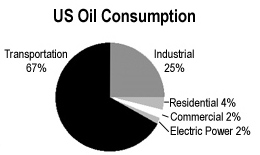backgrounder
Will Drilling the Arctic Refuge
Really Solve
Our Oil Woes?
 After a year of soaring gas pump prices and high
home heating costs, many policymakers and analysts want to tap the
oil reserves in the Arctic National Wildlife Refuge. Drilling
pristine Alaskan lands is a shortsighted and ineffective strategy
tantamount to placing a band-aid over a compound fracture. For
long-term solutions that make economic and environmental sense,
policymakers should act to increase energy efficiency and the use of
renewable energy, and to eliminate fuel-economy loopholes for light
trucks and SUVs. After a year of soaring gas pump prices and high
home heating costs, many policymakers and analysts want to tap the
oil reserves in the Arctic National Wildlife Refuge. Drilling
pristine Alaskan lands is a shortsighted and ineffective strategy
tantamount to placing a band-aid over a compound fracture. For
long-term solutions that make economic and environmental sense,
policymakers should act to increase energy efficiency and the use of
renewable energy, and to eliminate fuel-economy loopholes for light
trucks and SUVs.
Reaping
What We've Sown:
The Current Oil "Crisis"
In 2000, the United States
imported 54% of its oil products, sending $180,000 overseas each
minute. Depending on imports leaves Americans vulnerable to oil's
price volatility. The solution is not more oil, but less dependence
on oil.

Drilling
the Arctic:
An Unwise Choice
After the energy
crisis
of the 1970s, most areas of the economy reduced their
reliance on oil substantially. Today, only 2% to 3% of US
electricity is generated from oil. Thus oil from the Arctic National
Wildlife Refuge would have virtually no impact on California's
energy crisis or other power-generation issues.
Drilling in the refuge would
provide a very short-term solution for a long-term problem. A recent
government study estimates that 3.2 billion barrels of oil could be
economically recovered from the Arctic National Wildlife Refuge.
This is only enough oil to fuel the US vehicle fleet for a mere 6
months. Alternatively, it could supply US industrial, commercial,
residential, and power generation needs for 17 months (and that's at
1998 consumption levels). Why plunder the last true US wilderness
for such a paltry return?
Real
Transportation Solutions:
Fuel-Efficient SUVs and Alternative
Fuels
Transportation is the
largest consumer of oil in the country (67%), and thus is highly
vulnerable to volatile oil prices. With the fuel economy of new
passenger vehicles at a 20-year low, American drivers feel the pinch
when gas prices soar. Booming sales of SUVs and light trucks are
responsible for this plummeting fuel efficiency.
If we opened the Arctic
Refuge today, oil would not being flowing until 2010. But if we
start to increase SUV and light truck fuel economy today, by 2015 we
could save as much oil as economically recoverable from ANWR over 50
years. And drivers would save $25 billion a year at the pump. To
give automakers the incentive to make these technologies available
to consumers, policymakers must close the fuel-economy loophole that
allows light trucks to burn 33% more gasoline per mile than
passenger cars. Affordable technologies are currently available to
boost SUV and light truck fuel economy without sacrificing
power.
Other, more advanced
technologies -- some already in production and others available in
the near future -- can make even greater impacts on our oil
dependence.
- Hybrid engines, which
combine an electric motor and gasoline engine, can boost the fuel
efficiency of any vehicle.
- Fuel cells, which could
be in showrooms this decade, provide a zero-emission,
gasoline-free method to power all cars and
trucks.
Real Energy
Solutions: Efficiency and Renewable Energy
Nine Steps
to Reduce Oil Consumption
- Upgrade
fuel-economy standards for SUVs and light
trucks.
- Offer tax
incentives for advanced, fuel-efficient
vehicles.
- Establish public
benefit trust funds to promote energy
efficiency.
- Reduce industrial
energy use through incentives and voluntary
agreements.
- Adopt more
stringent energy codes for new industrial, commercial, and
residential buildings.
- Remove barriers
to development of industrial energy facilities that
simultaneously generate steam and electric
power.
- Provide
incentives for using energy-efficient technologies in
existing buildings.
- Require
appliances and other products to be energy
efficient.
- Implement
renewable portfolio standards in electricity
markets.
|
A better answer to power
outages and price spikes than drilling in the Arctic Refuge is to
decrease demand through efficiency and to increase electricity
production from renewable sources. Because renewable power does not
rely on fossil fuels, it is not subject to the price volatility that
plagues power plants, most of which run on coal and natural
gas.
By enhancing energy
efficiency and acquiring more energy from renewables, the United
States could save about 580 million barrels of oil annually by 2010.
At this rate, in just 5.5 years we could save as much oil as is
economically recoverable from the Arctic National Wildlife Refuge.
In addition, leaving this oil in the ground will keep nearly 1.6
billion tons of carbon dioxide from reaching the atmosphere and
contributing to global warming.
Those who call for
drilling the Arctic National Wildlife Refuge are looking for quick
fixes rather than sustainable solutions. Through fuel-efficient
automobiles, energy efficiency, and increased renewable energy, we
can lower the demand for oil. Through improved choices, America can
avoid the pitfalls of oil
overdependence. |







